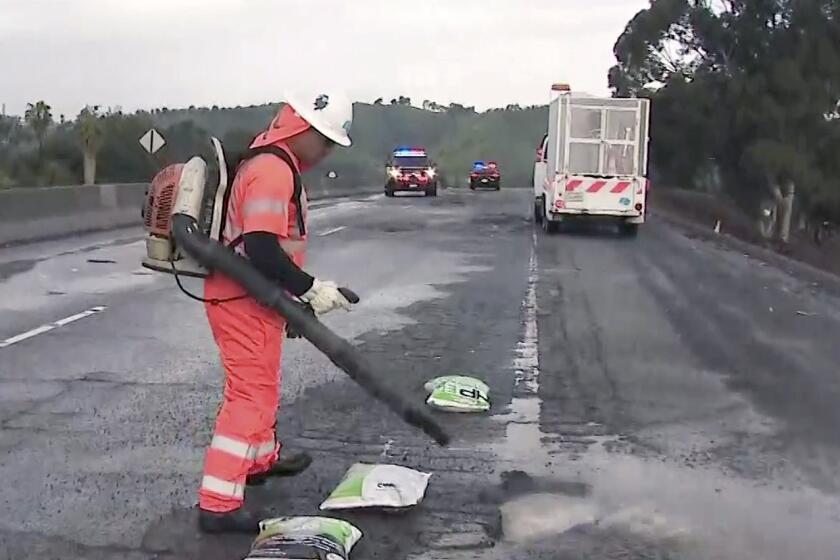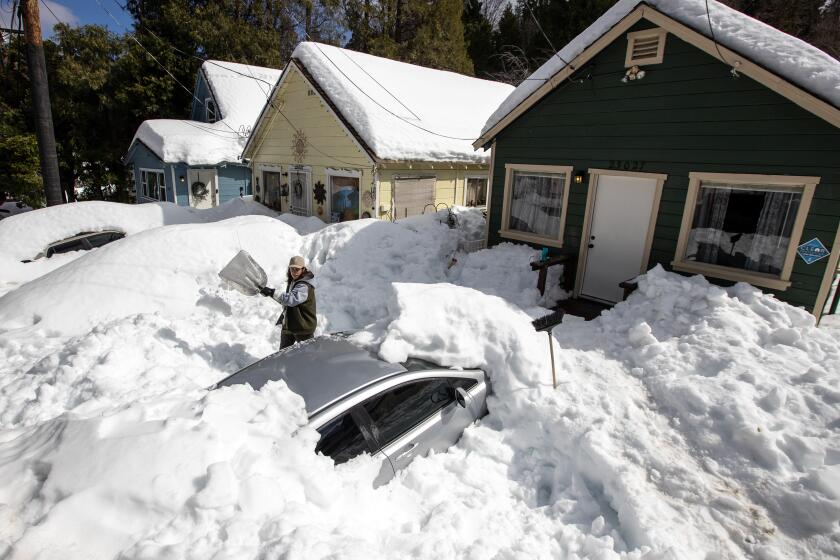When everyone sounds like a weather forecaster, whom should you trust?
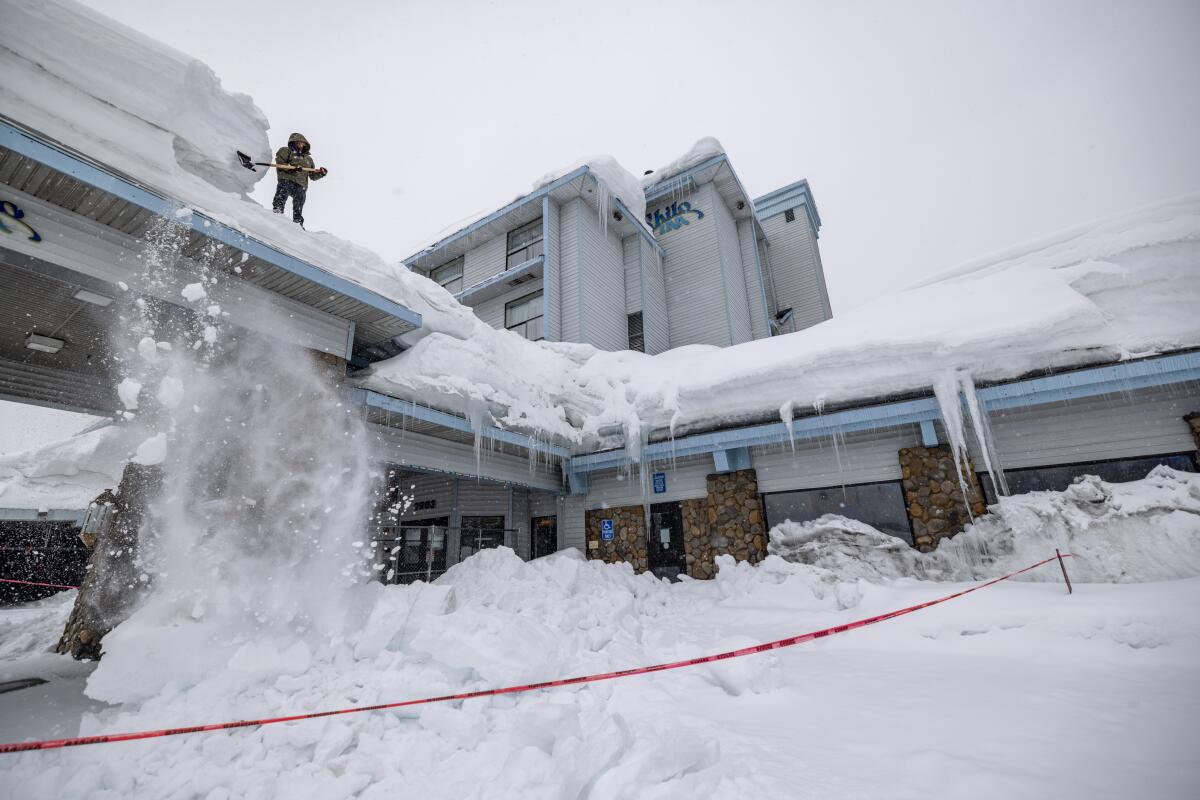
- Share via
This winter, as atmospheric rivers slam into California one after another, Daniel Swain isn’t just worried about rain and flooding.
The UCLA climate scientist, who has devoted his life to studying weather, keeps an eye out for a different type of storm.
“A lot of noise,” he says. “A lot of confusion.”
Independent and amateur forecasters, armed with global data available online, have disrupted the quiet, calm science of meteorology by posting their own weather predictions on blogs and social media.
Many of these self-proclaimed “weather nerds” glean information from books and the internet while adding a touch of local knowledge. They can be surprisingly insightful.
But professional meteorologists worry that some try to grab attention by predicting massive storms when the chances are slim. Or try too hard to be first, issuing forecasts based on premature, unreliable information.
In this season of epic rain, snowfall and even “bomb cyclones,” with the public looking to forecasters for potentially life-or-death advice — hunker down or evacuate? — the key is providing warning without overhyping the situation.
“There are amateurs on Twitter who sound good but are wildly extrapolating,” the 33-year-old Swain says. “How does the average person differentiate?”
The business of forecasting has changed radically since (for as little as $10 a month) anyone can subscribe to the same raw data and analytical models the National Weather Service and other professionals use. As Swain puts it: “You don’t need a PhD to be pretty good at understanding certain parts of the weather.”
Access to information has emboldened younger amateurs such as Colin McCarthy, who launched his US_Stormwatch account on Twitter as a teenager in Northern California.
Now studying atmospheric science at UC Davis, McCarthy says he feels pressure to be accurate but was confident enough in his skills to jump out ahead of the weather service in warning 90,000 followers that massive snowfall would hit Southern California last month.
“I turned out to be right,” the 19-year-old student says. “I was glad I put it out there because it went viral.”
There is an important point here about timing. According to the National Oceanic and Atmospheric Administration, five-day forecasts are 90% accurate; with 10 days or longer, the success rate drops to about half. Still, some amateurs wonder if the National Weather Service is too cautious or worried about its reputation, hesitating too long to issue weather warnings.
“I have my own way of doing things,” McCarthy says. “And I have the freedom to do what I want.”
This individualistic approach gets pushed to extremes by a Riverside County weatherman who has spent decades not only posting forecasts but also “going against the NWS at all cost.”
Raiden Storm — his professional name — promises visitors to his subscription website and SCWeatherForce account on Twitter that he will “save your life someday.” With a fedora tugged down over his head, he holds live chats to criticize government meteorologists and talk about his unique brand of weather math.
“I’m kind of filling in the gaps,” the 38-year-old says. “I get a lot of flak for that.”
The remarkable ‘bomb cyclone’ storm is losing energy as it moves southeast, but it could still cause damage and flooding, especially in the already soaked Central Valley.
The weather service normally declines to comment on other forecasters. But in 2011, officials issued a statement to clarify they had “no association” with Storm — whose legal name is Kevin Martin — or his forecasts that they warned “could visually be confused” with government reports. Contacted for this story, an agency spokeswoman encouraged members of the public to get weather information “from sources they find reliable.”
When it comes to taking chances with predictions, Howard Sheckter learned a lesson early on.
In the 1980s, as he began a dual career as real estate agent and part-time weatherman in Mammoth Lakes, Sheckter based his daily reports on limited information: marine forecasts, conversations with National Weather Service veterans and weather segments from Sacramento television news. A local radio station fired him for predicting a storm that never materialized.
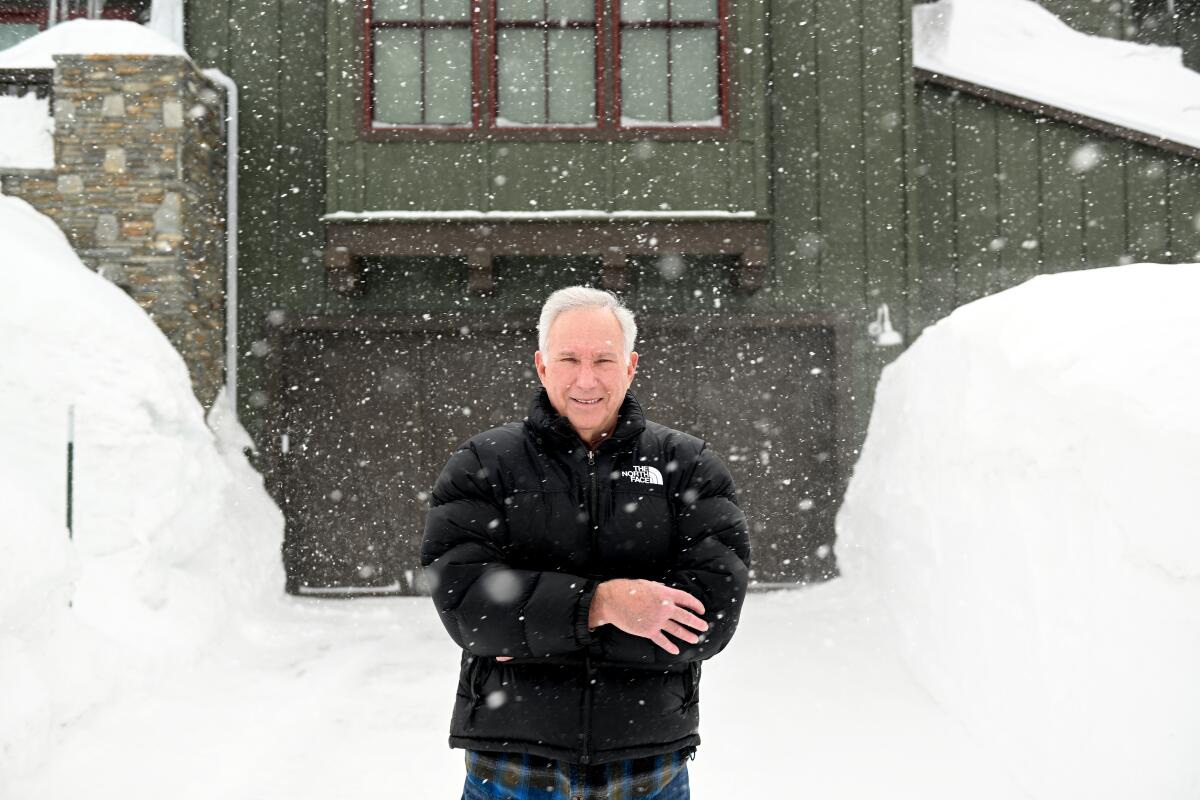
Since then, Sheckter, 72, has hewed more closely to the weather service, using his popular mammothweather.com blog to repackage government forecasts with his own brand of fan talk:
“La Niña has ended and ENSO-neutral conditions are expected to continue through the Northern Hemisphere spring and early summer 2023,” he wrote in a recent post. “Of interest, see the Warm Kelvin Wave and its effect noted in the sub surface water temps.”
Sheckter says: “I can read weather models but not to the degree the NWS can. With my discussions, I go into details of how and why it’s happening and how it relates to our area.”
To understand the tension that can exist between the pros and independents, it helps to know a little about the complexity of what they do, starting with the use of ensemble forecasting.
This process begins with current conditions as measured by weather stations, satellites, etc. In Los Angeles County, the weather service tracks more than 700 ground stations, or about one for every five square miles. The data are fed into a mathematical model that calculates a prediction.
There are problems from the start.
Because of the physical distance between stations, meteorologists must estimate conditions for all the gaps. Tiny errors can create larger inaccuracies in a long-range forecast. The mathematical model might be slightly off, too.
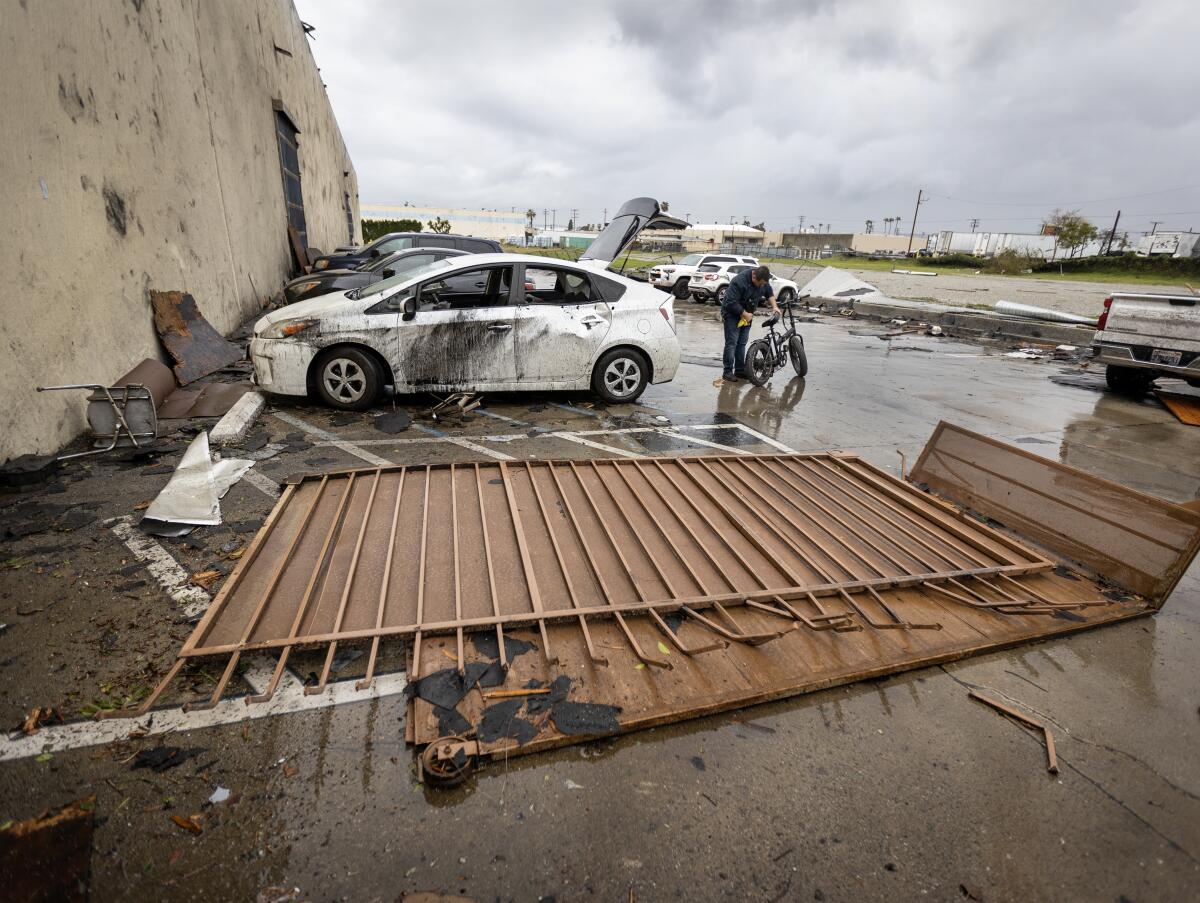
“We can’t write a perfect equation for nature,” says Shuyi Chen, an atmospheric sciences professor at the University of Washington. “There is inherent uncertainty built into the system.”
Ensemble forecasting compensates by running dozens of predictions using slightly different estimates for the gaps, adjusting numbers for temperature, wind and precipitation. The result is a range of possible outcomes.
Reading through all the “noise” means ignoring the outliers and focusing instead on those forecasts grouped most tightly in the middle, which represent the most reliable estimate of approaching weather.
Other factors include the El Niño and La Niña climate patterns and something called the Madden-Julian Oscillation, but Swain warnsthat scientific calculations “aren’t the whole story.”
As a recent storm approached Southern California, the UCLA scientist spoke with emergency officials about the worst-case scenario — an outlier that showed a small chance of widespread, catastrophic rainfall. But, on his Weather West blog and in interviews with the media, he leaned toward the more-probable, less-severe forecast that ultimately proved correct.
“Context is everything,” he says. “You don’t want to emphasize an outcome that has a 19-of-20 chance of not happening.”
Potholes closed the 71 Freeway overnight Tuesday in the same area where dozens of vehicles suffered damage and forced a closure last week.
Sharing severe but unlikely forecasts too often can lead to “warning fatigue.” If the dire predictions don’t come true, Swain says, “people are less likely to take it seriously when the big one is coming down the pike.”
That is why professionals take exception when independents issue long-shot forecasts, such as calling for a freak hurricane that was supposed to hit the California coast last summer but never arrived. Or a so-called ARkStorm — an atmospheric river megastorm devastating much of the state — that did not happen earlier this winter.
“Sometimes these people on social media can get big followings if they make big, bold predictions,” Swain says. “They are choosing from among dozens of possibilities and picking the most-extreme one.”
Last month’s heavy snowfall in the Southern California mountains, which trapped residents and vacationers, prompted a lot of finger-pointing.
With some independents posting early forecasts, people blamed the government for not warning them soon enough. As chief meteorologist for a Big Bear radio station, Ben Brissey recalls all the information swirling around as “nothing short of chaos.”
Like others, Brissey believes that only government agencies should issue severe weather warnings.
“It’s a tough job forecasting accurately five days out, much less five weeks,” Brissey says in an email. “We all need to use discretion when choosing what information we use and put out there for the world to see, especially if it directly affects our daily lives.”
San Bernardino County’s mountain communities are still far from recovered almost two weeks since the start of back-to-back monster winter storms. Officials say they’ll be better prepared next time.
Independents such as Sheckter and McCarthy agree the weather service should be the public’s primary source of weather information. They say they take a complementary role, using common language to help followers understand highly technical forecasts.
This distinction is crucial to professionals who see a difference between predicting widespread catastrophe versus warning about localized flooding. Brissey calls it “a fine line between creating panic and situational awareness.”
At UCLA, Swain finds himself in an unfamiliar position; as a climate scientist often quoted by the media, he is usually the one who gets criticized as a doomsayer.
He likes that amateurs care so much about the weather and understands their urge to share this passion with the public. Long before earning multiple degrees in the field, he wrote a weather blog as a teenager.
The difference is, only about 50 people read his high school forecasts.
“Now, if your tweet goes viral, millions of people see it,” he says. “That’s precisely why it is so important to get it right.”
More to Read
Sign up for Essential California
The most important California stories and recommendations in your inbox every morning.
You may occasionally receive promotional content from the Los Angeles Times.


